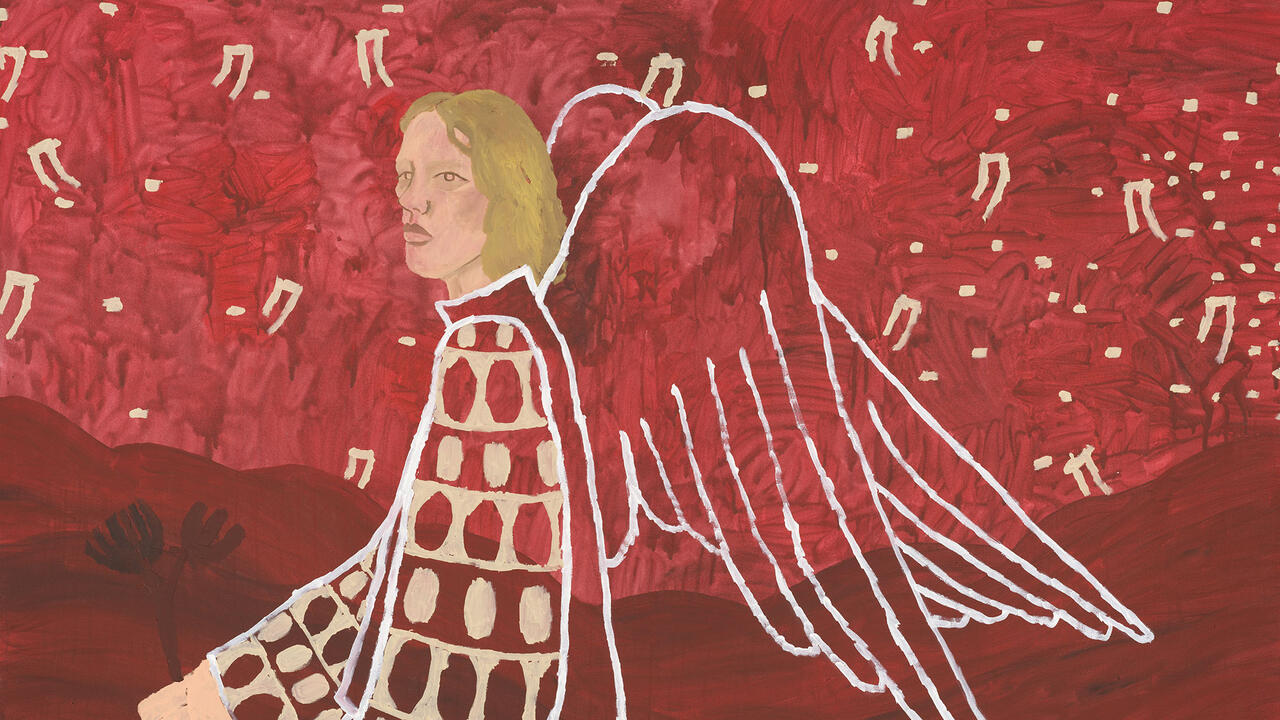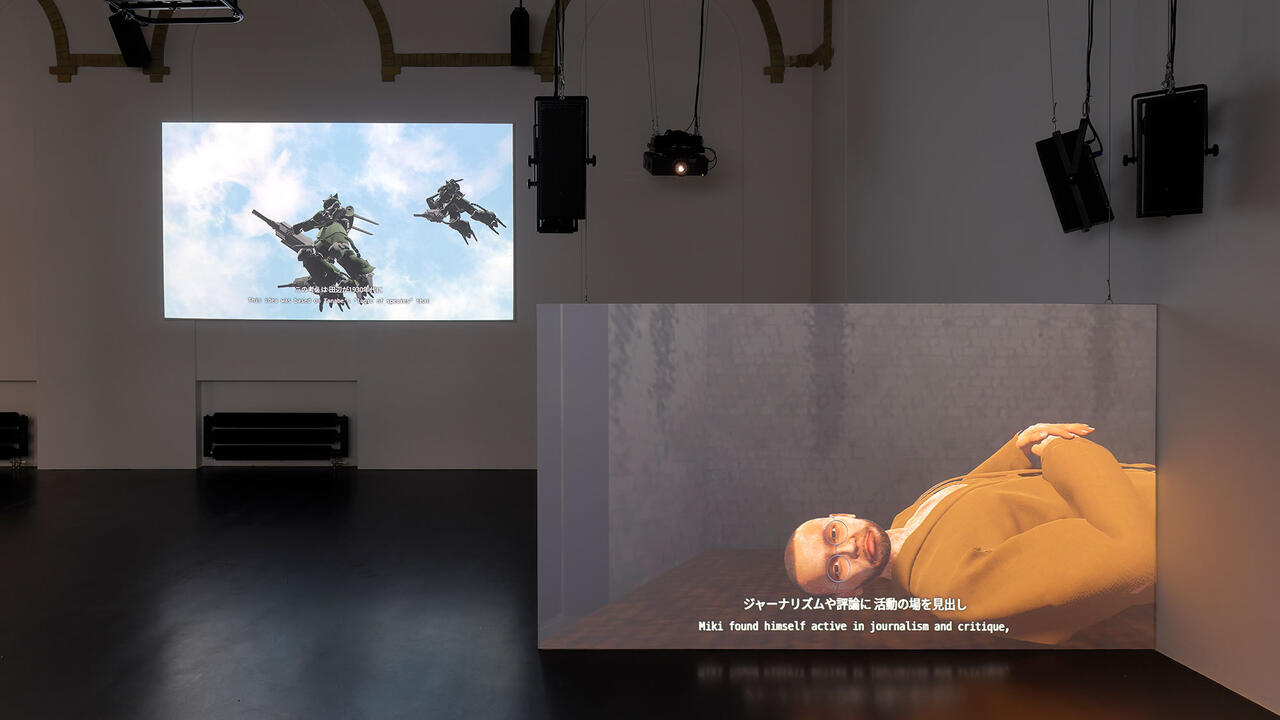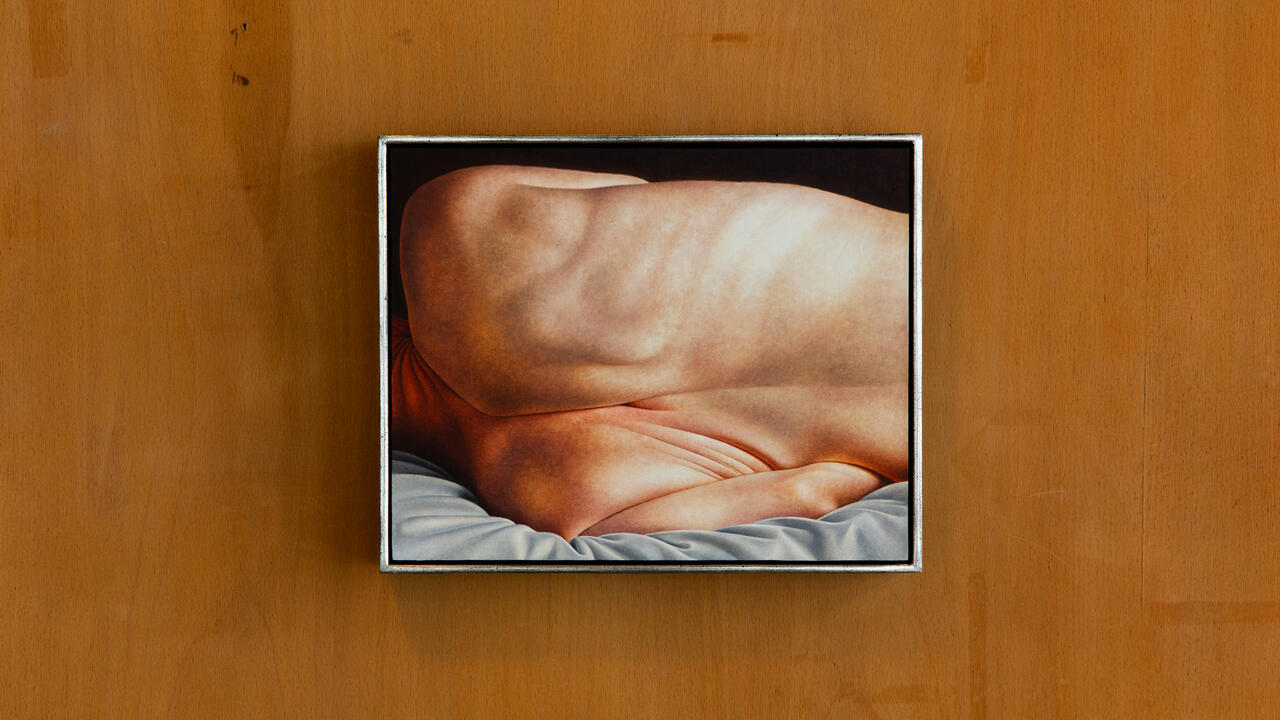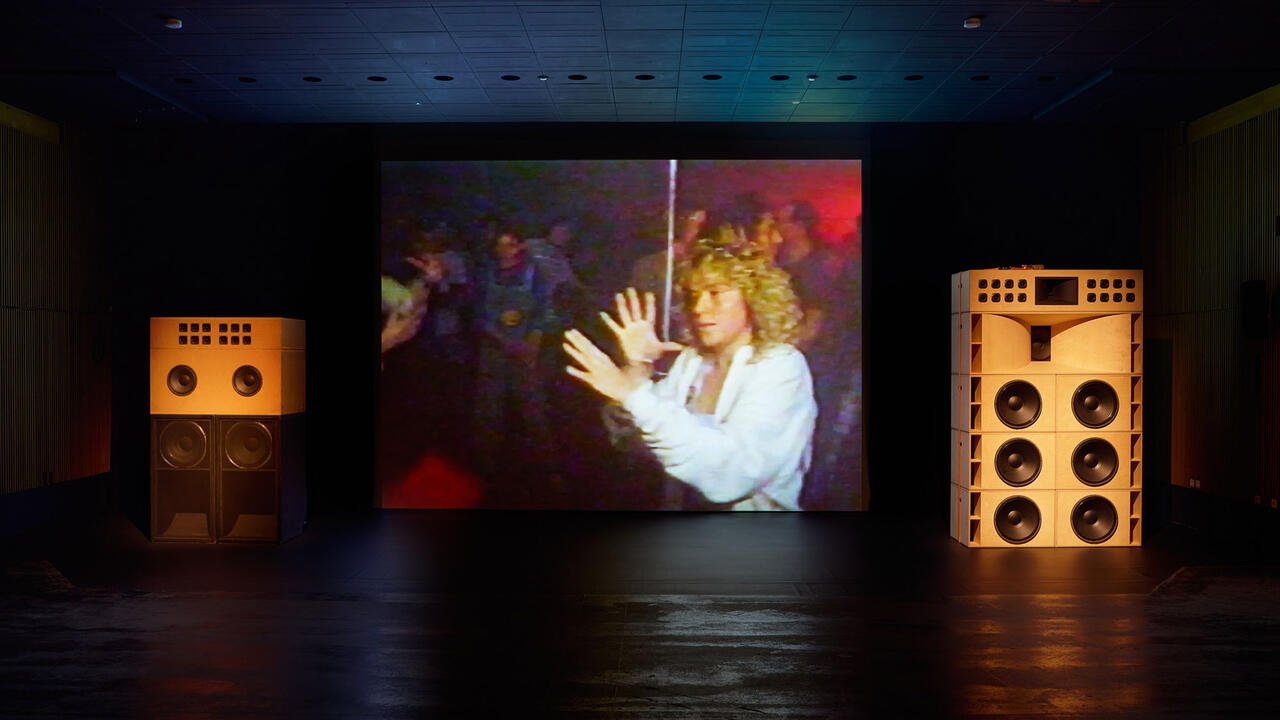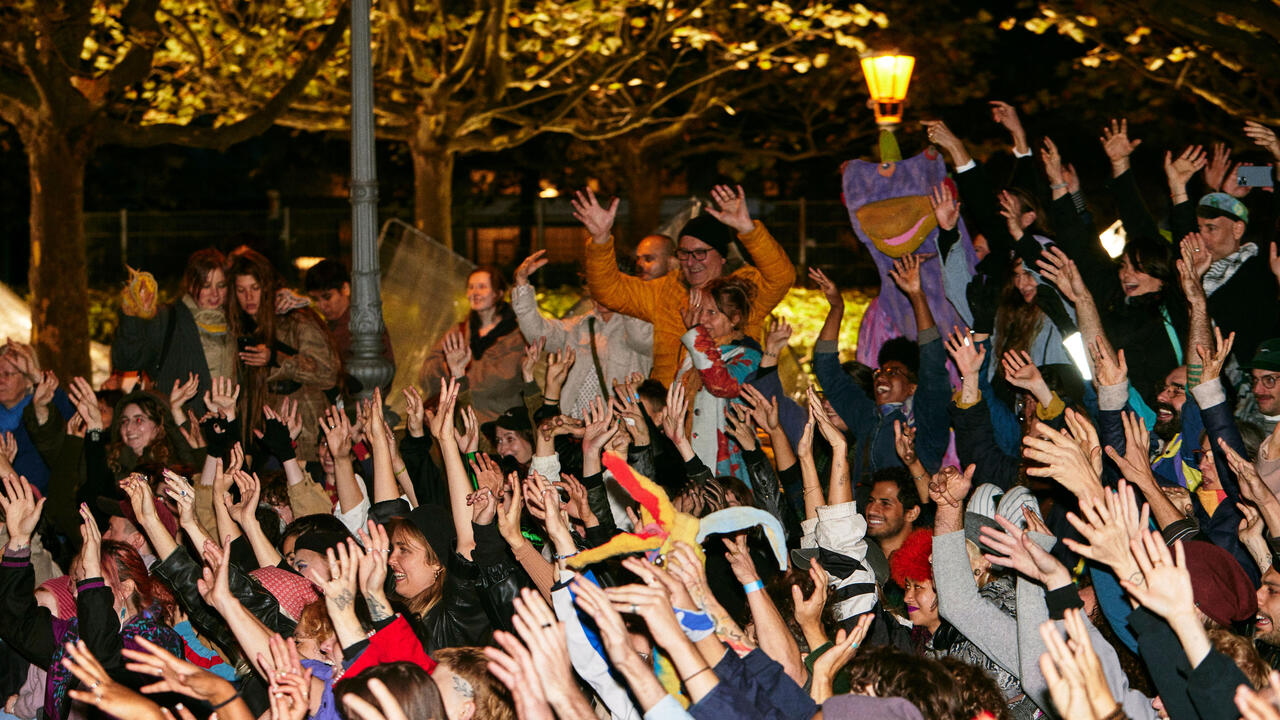Michael E. Smith
KOW, Berlin, Germany
KOW, Berlin, Germany

It’s 2142, and all Earthly, obstinate forms have quietly died out. An alien species descends on a fact-finding mission, code-named necropsy, and lands near a cenotaph believed to contain vestigial human life. The problem is, this species doesn’t know what water is, and they mistake hydrogen dioxide for poison. They think a bull testicle is a human remain; they diagnose a green laser pointer as a will-o’-the-wisp – that is, a human soul removed from its body. For them, a microwave is a home.
So might the story read if Michael E. Smith’s exhibition at KOW, Berlin, were a sci-fi novel. Smith’s plot would be sombre but stoic, its setting one of beeping, echoing emptiness, its language factual and inventorial. Smith’s is a sparse, eerie show of untitled sculptures (all works 2017), in which the junk and detritus of late human existence – a microwave, a pristine mattress, a dehumidifier, an artificial heart, for starters – are excavated and agglomerated, imbued with impossible magnetism and collapsed into a tense, yearning sequence of objects.
Upstairs is an overturned white microwave, teetering on a staircase, as if about to jump. Nearby, two flat monitors play identical grainy, found footage of birds in cages in an outdoor urban environment: city space, and its control systems, as imprisonment. On a wall downstairs is a totemic, tribal relic: a hairy bull scrotum, desiccated and purse-like. Nearby, black sweatshirts are attached to a smoke machine from which, occasionally, vapour emanates like a silky ghost. The head of a lawn sprinkler is attached cleanly to an artificial heart. On an opposite wall, a red, dead macaw is pegged upside down: occasionally, the green light from a laser pointer flashes across the creature’s head, in some bizarre clockwork of a leprechaun’s mock-life, or half-life. We see a mattress and a stretched white bed sheet, site of procreation and sleep; a dehumidifier, slammed against a dead angelfish; a bull scrotum, a dumb, silent, dried-out emblem of virility, is pinned to the wall like a sacrificial artefact.
As to the meaning of these things, some free association can help: if water is aqua viva, the life-stuff of earth-born species, then microwaves raise its water temperature and dehumidifiers suck it out, killing life, hence the dead fish and macaws. By implication, with Smith’s help, we can decline the moods of the verb ‘to live’: to breathe, to vaporize, to sprinkle, to tinkle. To make sculptures of ice-cold abstraction that contain, and restrain, the uneasy sparks of life. Smith’s dark slapstick universe is a parable about life as a cheap dongle; existence as an imaginary cursor, which hits the head of a bird like a torture droplet of water. A disused mattress, sucked of vicissitude, which returns to mock it, as the word ‘macaw’ suggests. This has a tragic intelligence: Smith’s assemblages, made with a surprising combination of low material (sweatpants and smoke machine), technology in repose (a microwave) and virile, loaded objects (a bull scrotum), are strange but not random. They demonstrate the varied forms of life we steep and pin onto objects, breathing life into dead things, and robbing life from the living. Smith’s metaphor for this is the artificial heart, tubular and transparent, dried of liquid matter and wanting desperately to leak, to weep. Here is the multi-channelled, multi-chambered core of Smith’s koan-esque exhibition.
Like an alien, I look around, take stock, struggle to understand; but, exhaling, I am spoken to by this moving cenotaph about late-human struggles for life in the sci-fi novel we call reality.
Main image: Michael E. Smith, 2017, exhibition view










